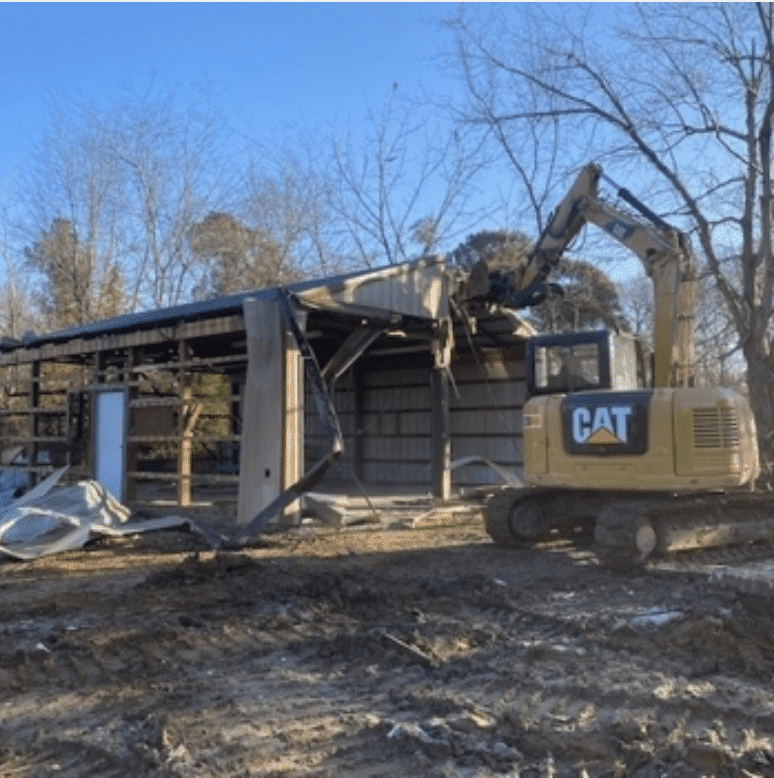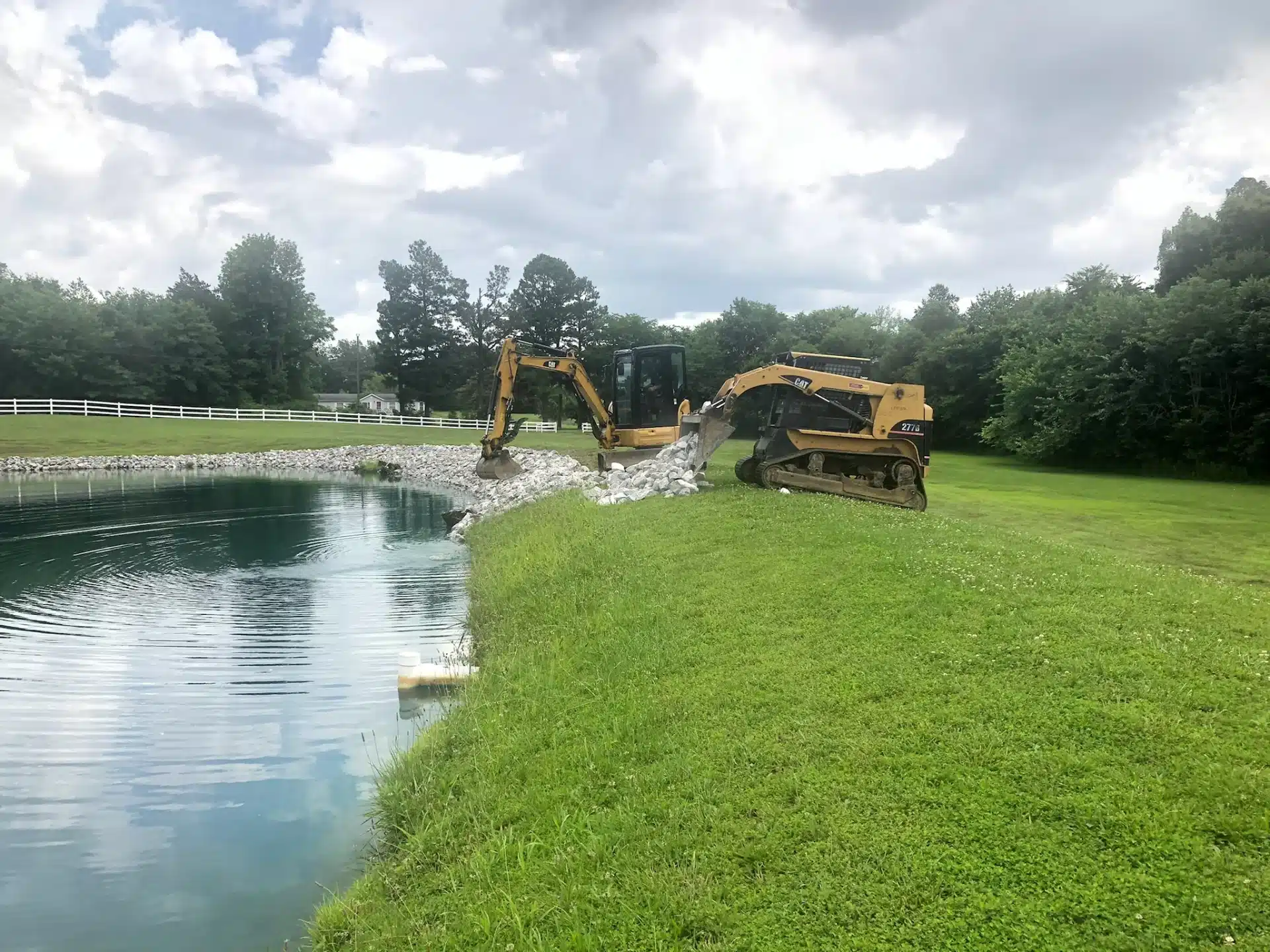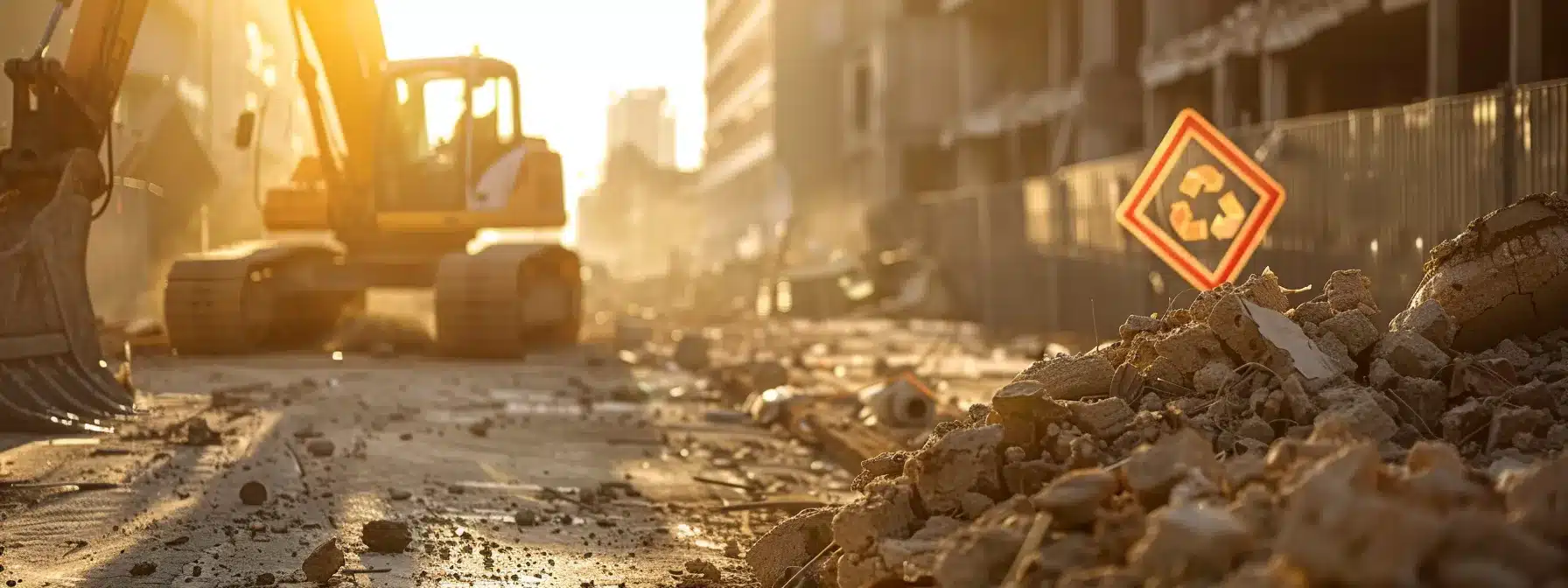Erosion control plants play a crucial role in maintaining the health and stability of our landscapes. From preventing soil erosion to enhancing biodiversity, these plants offer a range of benefits that are essential for a sustainable environment.
In this article, we will explore the importance of erosion control plants, the different types available, how they work, factors to consider when choosing them, and how to effectively use them in landscaping. Join us as we delve into the world of erosion control plants and discover their numerous advantages.
Key Takeaways:
- Erosion control plants are specifically selected and used to prevent soil erosion in various landscapes and environments.
- These plants play a crucial role in maintaining soil stability, preserving biodiversity, and improving water quality.
- Factors such as climate, soil conditions, and maintenance requirements should be considered when choosing the appropriate erosion control plants for a specific area.
What Are Erosion Control Plants?
Erosion control plants play a crucial role in preventing soil degradation and preserving landscapes by stabilizing soil and preventing erosion.
Ground covers, such as creeping junipers and clover, provide a protective layer that shields the soil from the impact of raindrops and wind, minimizing the risk of erosion.
Shrubs like lavender and bayberry have deep-reaching roots that anchor the soil, reducing the likelihood of landslides and runoff. These erosion-busters not only safeguard the environment but also add beauty and diversity to gardens, parks, and other green spaces, creating visually appealing landscapes that are both sustainable and resilient.
Why Are Erosion Control Plants Important?
Erosion control plants are essential for safeguarding soil integrity, preventing erosion, and enhancing the beauty and practicality of landscapes.
These plants play a vital role in stabilizing soil structures and preventing sediment runoff, particularly on sloped terrains or areas with high rainfall.
The selection of erosion control plants that are resistant to deer browsing is crucial in ensuring long-term effectiveness in areas prone to wildlife disturbances.
Planting these species in sunny locations helps promote their growth and root establishment, thereby maximizing their erosion protection benefits.
What Are the Types of Erosion Control Plants?
Erosion control plants encompass a diverse range of species, including ground covers, shrubs, and perennials that offer both aesthetic beauty and erosion-fighting functionality.
These plants play a crucial role in stabilizing soil on sloped landscapes, preventing water runoff and reducing the risk of landslides. Flowering erosion control plants, such as the vibrant Blanket Flowers or the delicate Creeping Phlox, add a splash of color while aiding in soil retention. On the other hand, shade-tolerant varieties like Hostas and Ferns thrive in shady areas where erosion can be a prevalent issue. Each plant has its unique set of characteristics, from their root systems that bind the soil to their ability to withstand challenging environmental conditions.
Grasses
Grasses are a versatile category of erosion control plants, with species like annual ryegrass, Bermuda grass, and sweet grass offering effective erosion protection and soil stabilization.
The text is already formatted with HTML tags for bold text and a paragraph
. No further formatting is needed for this text.
Shrubs and Trees
Shrubs and trees such as juniper, Deutzia, and Forsythia are valuable erosion control plants that offer both aesthetic appeal and practical erosion-fighting capabilities.
One of the popular shrubs used for erosion control is Vinca Minor, also known as periwinkle, which is renowned for its rapid spread and dense mat-forming habit that effectively holds soil in place. Its trailing stems and small evergreen leaves create a lush carpet that not only stabilizes slopes but also adds a splash of green to landscapes. Additionally, Hydrangea shrubs are prized for their vigorous root systems that anchor soil, preventing erosion on sloped terrains. Their large, showy blooms and dense foliage provide an attractive and functional solution for erosion-prone areas.
Groundcovers
Groundcovers such as Pachysandra terminalis, Lamium maculatum, and bugleweed serve as excellent erosion-busters, providing soil protection and enhancing landscape aesthetics.
Groundcovers play a vital role in controlling erosion by forming a protective layer over the soil, preventing it from being washed away by rainwater or wind. They are particularly effective in sloped areas where soil erosion is a concern.
- Creeping phlox
- Creeping juniper
are two popular groundcovers known for their spreading habits, quickly covering bare areas and stabilizing the soil. These low-growing plants not only help in erosion control but also require minimal maintenance, making them ideal for busy gardeners. Different groundcovers have varying suitability for different soil conditions, so choosing the right one for your specific landscape needs is crucial.
Wildflowers
Wildflowers like Osmunda claytoniana, Riverbank lupine, and spotted dead nettle contribute to erosion control efforts by providing colorful foliage, attracting pollinators, and stabilizing slopes.
These vibrant wildflowers not only add beauty to the landscape but also play a crucial role in preventing soil erosion. Their extensive root systems help bind the soil together, reducing the risk of landslides and runoff. One of the significant advantages of using wildflowers such as Osmunda claytoniana and Riverbank lupine in erosion-prone areas is their adaptability to various soil conditions, making them suitable for different terrains.
How Do Erosion Control Plants Work?
Erosion control plants function through their robust root systems that anchor soil, canopy coverage that shields against water runoff, and absorption of water and nutrients that promote soil stability.
These plants, such as creeping myrtle and Asian jasmine, play a crucial role in preventing soil erosion. The extensive root systems of these plants create a dense network underground, effectively holding the soil in place and preventing it from being washed away by rainwater or wind.
The canopy structures provide a physical barrier that deflects the impact of rainfall, reducing the force of water running over the soil surface. The process of absorbing water and nutrients helps in strengthening the soil structure, making it more resistant to erosion over time.
Root Systems
The root systems of erosion control plants like creeping phlox, creeping juniper, and mondo grass play a vital role in stabilizing soil, preventing erosion, and promoting overall landscape health.
Root systems are an essential aspect of erosion control, as they help anchor the soil and reduce the impact of water runoff. Plants such as vinca minor and weeping lovegrass are known for their extensive root networks, which can penetrate deep into the ground, binding the soil together.
Vinca minor, also known as periwinkle, thrives in various soil types and spreads quickly, creating a dense cover that effectively holds the soil in place. On the other hand, weeping lovegrass is particularly effective in managing erosion on sloped terrains due to its deep and fibrous roots that provide excellent stability.
Canopy Coverage
Canopy coverage provided by shrubs like lilyturf and groundcover roses offers essential protection against water erosion, shielding the soil from moisture and preventing runoff.
Shrub canopies act as a natural barrier, intercepting raindrops and slowing down their impact on the soil surface. This function is crucial in preventing soil particles from being dislodged and carried away by water. In addition, the intricate root systems of plants such as black mondo grass play a vital role in anchoring the soil, reducing the likelihood of erosion on slopes and unstable terrain.
Absorption of Water and Nutrients
Erosion control plants like ferns and spurge aid in soil stability by absorbing excess water and nutrients, reducing erosion risks and enhancing the overall health of the landscape.
These plants act as natural barriers, preventing soil erosion by deeply rooting themselves into the ground, creating a network that binds the soil particles together. The intricate root systems of ferns and spurge not only anchor the soil but also facilitate water absorption and nutrient uptake, helping to maintain soil moisture levels and prevent nutrient leaching. The dense foliage of these plants provides shade and protection, further reducing the impact of rainfall and runoff on the soil.
What Factors Should Be Considered When Choosing Erosion Control Plants?
When selecting erosion control plants, factors such as climate suitability, soil conditions, and maintenance needs should be carefully evaluated to ensure the plants thrive and effectively combat erosion.
One essential consideration is the environmental factor, as different plants thrive in various climates. It’s vital to choose plants like japanese spurge that are well-suited to the specific climate of your area.
Assessing the soil compatibility is crucial. Plants such as interrupted fern excel in certain soil conditions, so understanding the composition of your soil is key.
Maintenance demands vary among plants, with some requiring regular pruning and watering, while others are more low maintenance. By carefully selecting plants that match these criteria, you can establish a robust erosion control strategy.
Climate and Soil Conditions
The selection of erosion control plants must align with the local climate and soil conditions to ensure their successful establishment, growth, and erosion-fighting capabilities.
When considering erosion control plants, it is crucial to take into account the environmental factors that play a significant role in their survival and effectiveness. Species like ornamental grasses, such as big blue lilyturf and sweet grass, are popular choices due to their resilience in different climates and soil types.
Ornamental grasses, like switchgrass, can withstand harsh conditions and promote soil stability with their extensive root systems.
They thrive in a variety of environments, from moist soil to drought-prone areas.
Switchgrass, for example, is not only aesthetically pleasing but also serves as a natural barrier against erosion, making it a versatile and practical choice for landscaping projects.
Slope and Erosion Severity
The steepness of slopes and the severity of erosion dictate the selection of erosion control plants, with species like creeping cotoneaster and climbing hydrangea suited for challenging terrains.
When dealing with steeper slopes, the angle of inclination plays a critical role in erosion control. Plants like spotted dead nettle and ostrich fern are highly effective in managing erosion on sharp inclines. The dense root systems of these plants help stabilize the soil and prevent erosion caused by water runoff.
In contrast, on moderate slopes, species such as English ivy and ajuga reptans can offer reliable erosion protection. Understanding the relationship between slope steepness and plant adaptability is essential in creating sustainable erosion control strategies.
Maintenance Requirements
Understanding the maintenance needs of erosion control plants, such as terraces and groundcover roses, is crucial for ensuring their longevity, effectiveness in erosion prevention, and overall landscape enhancement.
One essential type of erosion control plant that plays a significant role in maintaining terraces and preventing soil erosion is Japanese spurge (Pachysandra terminalis). This low-growing evergreen groundcover plant is known for its dense foliage, which effectively holds soil in place while adding aesthetic appeal to landscapes.
Vinca minor, also referred to as periwinkle or myrtle, is another popular choice for erosion control due to its rapid spreading nature and ability to form a thick mat that stabilizes slopes.
Proper maintenance practices for these plants, such as regular watering, pruning, and fertilizing, are essential to ensure their optimal growth and erosion control effectiveness. Neglecting maintenance tasks can lead to decreased plant health, reduced erosion prevention capabilities, and overall landscape deterioration.
How to Use Erosion Control Plants in Landscaping?
Incorporating erosion control plants like terracing into landscaping designs enhances both the aesthetic appeal and practical erosion-fighting functionality of outdoor spaces.
These plant species, such as lilyturf and rock spray cotoneaster, not only add greenery and color to the landscape but also play a crucial role in stabilizing soil and preventing erosion. Utilizing terracing techniques can further enhance the beauty of sloped areas while effectively reducing water runoff and soil displacement.
Incorporating mulching around these erosion control plants can help retain moisture, suppress weeds, and protect the soil from erosion caused by wind and water. Bioengineering methods, such as using plant roots to reinforce slopes, provide a natural and sustainable solution to erosion control, blending functionality with visual appeal seamlessly.
Terracing
Terracing with erosion control plants like black mondo grass creates visually appealing landscapes while effectively preventing soil erosion on sloped terrains.
One of the key benefits of utilizing terracing techniques with erosion control plants is the significant reduction in surface runoff and soil loss, especially on steep gradients. The roots of erosion control plants anchor themselves firmly into the soil, stabilizing the terrace structure and minimizing the risk of landslides and soil erosion. Terraces provide a layered effect to the landscape, creating depth and interest.
When selecting suitable plant varieties for erosion control, creeping phlox and big blue lilyturf are excellent choices due to their spreading habit and dense root systems. Creeping phlox, with its colorful blooms cascading down the terraces, adds a vibrant touch while effectively holding the soil in place. On the other hand, big blue lilyturf’s lush foliage and low maintenance requirements make it a great option for ground cover on terraces.
Mulching
Mulching with erosion control plants such as creeping cotoneaster helps retain moisture, prevent soil compaction, and address erosion problems, contributing to sustainable landscape management.
Creeping cotoneaster is a low-growing shrub that not only adds aesthetic value to your garden but also plays a crucial role in erosion control. The dense foliage of this plant helps create a protective layer over the soil, shielding it from the impact of heavy rains and wind.
Plus creeping cotoneaster, using plants like Virginia creeper and ferns can further enhance the effectiveness of mulching in erosion control. These plants have deep roots that help bind the soil together, reducing the likelihood of erosion during adverse weather conditions.
Bioengineering Techniques
Bioengineering techniques involving plants such as riverbank lupine and ostrich fern offer sustainable solutions for erosion control, utilizing natural processes to enhance landscape resilience.
One key aspect of utilizing plant-based solutions for erosion management is their ability to establish root systems that effectively stabilize soil and prevent erosion from occurring. Weeping lovegrass, for example, with its deep root system, can anchor soil in sloped areas and reduce surface runoff, thus minimizing the risk of erosion. Asian jasmine, known for its dense foliage, can provide excellent ground cover, preventing soil disturbance and promoting stability. The ecological benefits of these erosion control plants extend beyond soil retention, as they also contribute to biodiversity by creating habitats for various wildlife species.
What Are the Benefits of Using Erosion Control Plants?
Utilizing erosion control plants offers a multitude of benefits, including preventing soil erosion, enhancing biodiversity, and improving water quality in natural ecosystems.
One of the key erosion control plants highly regarded for its effectiveness is switchgrass. This native grass species has deep, dense root systems that stabilize soil, reducing the risk of erosion caused by water runoff. Species like Hydrangea anomala play a crucial role in promoting biodiversity by providing habitats and food sources for various insects and birds.
By incorporating a variety of erosion control plants into landscapes, conservation efforts are not only aesthetically pleasing but also have long-lasting impacts on the environment. These plants act as natural filters, trapping sediment and pollutants to improve water quality in rivers, lakes, and other water bodies.
Prevents Soil Erosion
Erosion control plants like brown-top millet are effective in preventing soil erosion by stabilizing slopes, reducing runoff, and preserving soil structure for sustainable land management.
One of the key erosion protection mechanisms of lilyturf and creeping cotoneaster plants is their extensive root systems that bind the soil together, preventing it from being washed away by water. These plants act as nature’s own erosion barriers, anchoring the soil in place and reducing the impact of rainfall and wind on exposed slopes.
The slope stabilization properties of lilyturf and creeping cotoneaster involve their ability to spread horizontally, creating dense mats that hold the soil in place and prevent mass movement. As the plants grow and intertwine, they form a protective cover that mitigates the effects of erosion.
Enhances Biodiversity
Erosion control plants like ferns and creeping phlox contribute to biodiversity enhancement by attracting pollinators, providing habitats for wildlife, and promoting ecosystem resilience.
Erosion control plants play a vital role in maintaining the delicate balance of ecosystems. These plants, such as spotted dead nettle and rock spray cotoneaster, not only help prevent soil erosion but also serve as essential components in the intricate web of biodiversity. By creating stable landscapes, erosion control plants foster diverse wildlife habitats, offering shelter and food for various animal species. These plants add to landscape diversity, contributing to the aesthetic appeal of an environment and ensuring a rich tapestry of plant life.
Improves Water Quality
Erosion control plants like vinca minor play a vital role in enhancing water quality by reducing sediment runoff, filtering pollutants, and stabilizing stream banks for improved aquatic ecosystems.
One such example of a plant that contributes significantly to erosion control is riverbank lupine. These plants have deep roots that help hold soil in place, preventing erosion and reducing sedimentation in water bodies. By creating a stable environment along riverbanks, riverbank lupine also protects the habitats of aquatic organisms.
In addition, plants like mondo grass can act as natural filters for pollutants. Their root systems absorb excess nutrients and chemicals, effectively purifying the water that flows through them. This process not only enhances water quality but also reduces the risk of contaminating aquatic ecosystems with harmful substances.
The presence of erosion control plants in riparian areas is crucial for maintaining the health and balance of aquatic environments. They offer a natural solution to erosion issues, promote cleaner water by filtering out pollutants, and create stable habitats for aquatic life to thrive.
Frequently Asked Questions
What are erosion control plants?
Erosion control plants are specially selected and planted species that help prevent soil erosion by stabilizing the soil and reducing the impact of wind and water.
What are the benefits of using erosion control plants?
Erosion control plants not only prevent soil erosion, but they also improve water quality, increase biodiversity, and provide habitat for wildlife.
What types of plants are considered erosion control plants?
Erosion control plants can include grasses, shrubs, trees, and groundcover plants that have extensive root systems and can withstand harsh weather conditions.
How do I know which erosion control plants to use?
The best erosion control plants for your specific location will depend on factors such as soil type, slope, and climate. It is best to consult with a local expert or do research to determine the most suitable plants for your area.
Can I use erosion control plants in my garden or landscaping?
Yes, erosion control plants can be used in gardens and landscaping to prevent soil erosion and add beauty to the landscape. They can also be used in larger scale projects such as reforestation and streambank restoration.
Do I need to maintain erosion control plants?
While some erosion control plants may require minimal maintenance, such as occasional pruning, others may require regular care and monitoring. It is important to understand the maintenance needs of the specific plants being used to ensure their effectiveness in erosion control.













